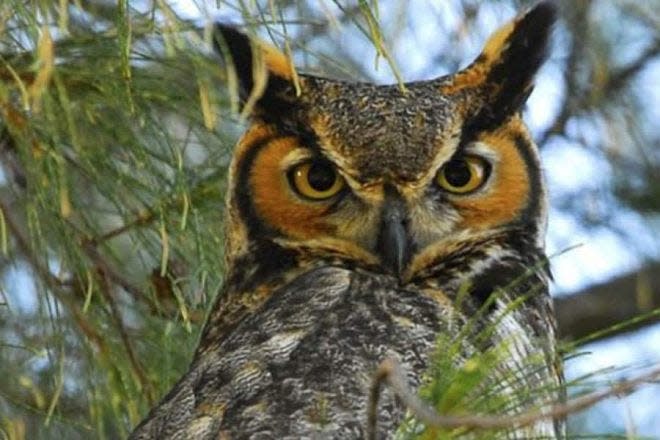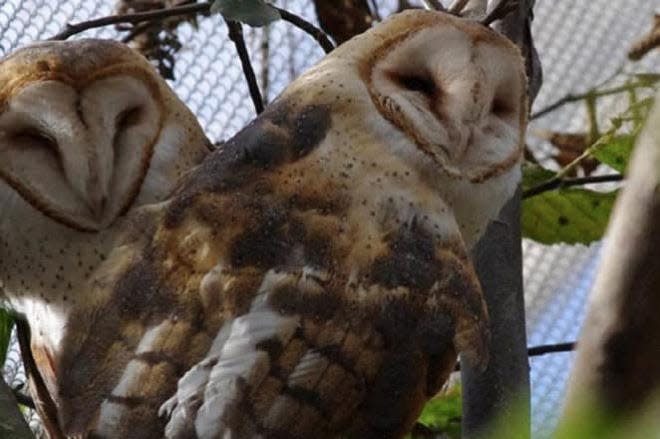Who? Meet Scruff, Bela and Boris, WNC Nature Center's birds of the night
In last month’s Nature Center Notes, we celebrated National Bird Day by learning about diurnal raptors that live at the WNC Nature Center. This month, take a look at our nocturnal (most active at night) residents, the great horned owl and the barn owls.
Scruff, Great Horned Owl – Great Horned Owls are the largest species of owl in North Carolina and one of the only North Carolina owl species that actually “say” WHO, WHO. These owls have a beautiful brown mottled pattern on their feathers and recognizable ear tufts that resemble horns.

Their large eyes and excellent hearing allow them to successfully hunt prey at night. Great Horned Owls are one of the few predators that will actively hunt skunks, which are also nocturnal. The edges of owls’ feathers are serrated like combs which allows them to reduce noise while flying.
This allows them to sneak up on a skunk so the skunk doesn’t have a chance to spray them. Owls don’t have a sense of smell anyway, so being sprayed by a skunk doesn’t deter them from continuing the hunt. Great Horned Owls are excellent pest control specialists because they eat rodents and other pests.
Bela and Boris, Barn Owls – Barn Owls are a smaller species of owl that are commonly found in open areas, such as farmland. They have white, heart-shaped faces, are cream or cinnamon colored, and they are extremely effective hunters. A family of barn owls can eat four or five mice a night. Farmers rely on animals such as barn owls to help regulate pests. The regulation of pests near grain sources can help prevent food loss and the spread of diseases.

Because large open spaces are getting harder and harder to find, barn owls are on the decline. North Carolina Wildlife Resource Commission biologists are seeking barn owl observations to help them learn more about habitat needs and population distribution of barn owls in North.
Property owners who have barn owls can help further biologists’ knowledge by allowing them to place nest boxes on their properties, free of charge. To participate, anyone who spots a barn owl and/or property owners willing to have a nest box placed on their property are asked to contact Allison Medford at allison.medford@ncwildlife.org or 910-975-9393.
You can help all native species of owls by placing nest boxes on your property. Owls usually nest in the cavities of trees, so nest boxes are an excellent alternative. You can find owl nest box plans and tutorials at audubon.org. And don’t forget to visit the WNC Nature Center to see Scruff, Bela, and Boris.
Candace Poolton is the Public Engagement Manager for Friends of the WNC Nature Center.
This article originally appeared on Asheville Citizen Times: Who? Meet Scruff, Bela and Boris, WNC Nature Center's birds of the night

